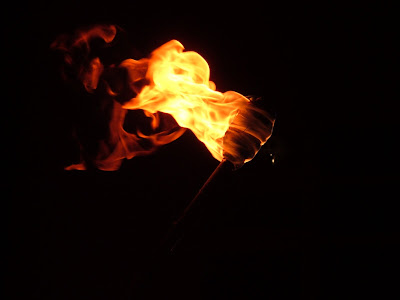
whilst over at Marvel Sgt Fury is no Beau Brummel:



(You'll have to trust me that the characters go around like this most of the time; wearing a smart uniform signifies a story set on leave, or a Court Martial. British war comics, such as the Commando line, tend to have less holey protagonists.)
Why might this be? Some thoughts:
Approximating long underpants
Muscular bodies bursting out of the uniforms makes the characters look a bit more like superheroes, whose tight outfits present them in a kind of decorated nakedness. (The look also relates somewhat to pre-comics pulp hero Doc Savage, in his trademark ripped shirt.)

So the visual style may be a way of saying 'these comics are a bit like the more popular superhero ones, fanboys - get your money out.'
Beat warfare
During the Silver Age of the 60s and 70s, war comics were a pretty downbeat affair. The classic Sgt Rock stories by Bob Kanigher, with covers and sometimes interior art by Joe Kubert, showed a weary crew of grunts slogging their way across theatres of war - hard-bitten survivors rather than glory hounds or paragons. The stories all ended with the 'Make War No More' slogan, and other titles such as The Losers showed an interesting ambivalence. In this context, the battered torn clothing contributed to a kind of beat(up) atmosphere and a sense of the men being abraded victims of larger forces.

Natural Bare Killers
The GIs in their ripped-up gear contrasted with the depictions of Nazis and the occasional allied serviceman who would appear in smart uniforms. Perhaps the idea was to show the Americans as more natural, individual, virile and human. Or simply as harder fighting, judging by the wear-and-tear on their outfits.
All of the above would make sense: a nexus of forces (Our Fighting Forces perhaps) shaping an artistic choice...
But! What about this picture by Norman Rockwell, predating the comics?
This guy's uniform is ripped to buggery as well. (What is it with GIs? Could they not issue a needle and thread?) For what it's worth I think the Rockwell image has some other drivers. The gun is very much the centre of the picture, and the pristine white fabric ammo belt spooling through it contrasts with the dirty, torn uniform. (This is heartbreaking, when you ponder the message - we're meant to stitch together his ammo belt rather than sew him some clothes that will cover his flesh.) This creates a sense of sacrifice - by the gunner who has abandoned civilised clothing and cleanliness to feed the weapon; by the munitions workers back home (eg Rockwell's Rosie the Riveter) putting in extra hours to get those shining cartridges produced.
I can't relate the two - perhaps there some artistic tradition of ragamuffin soldiery within which all of these images fit?


